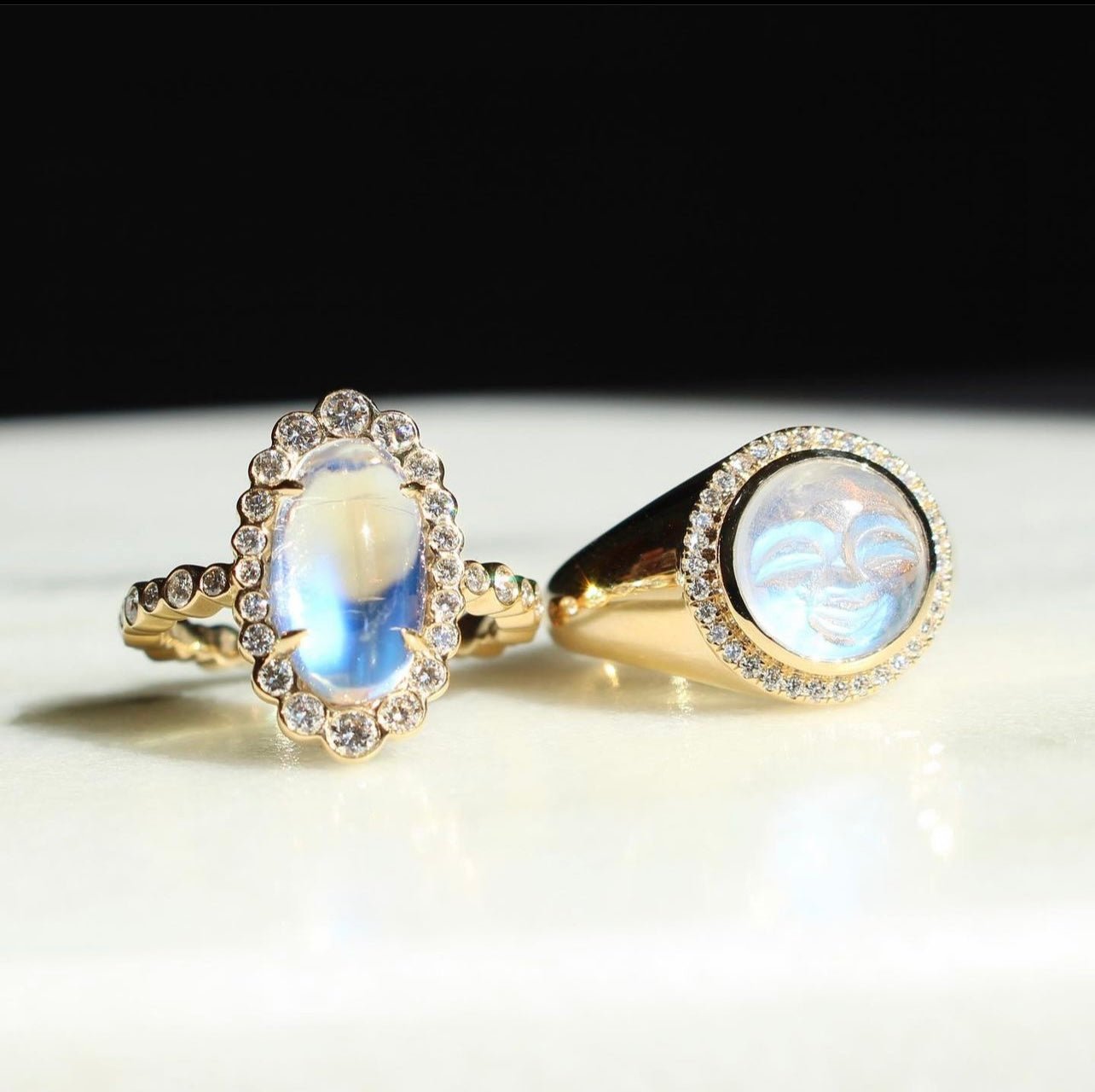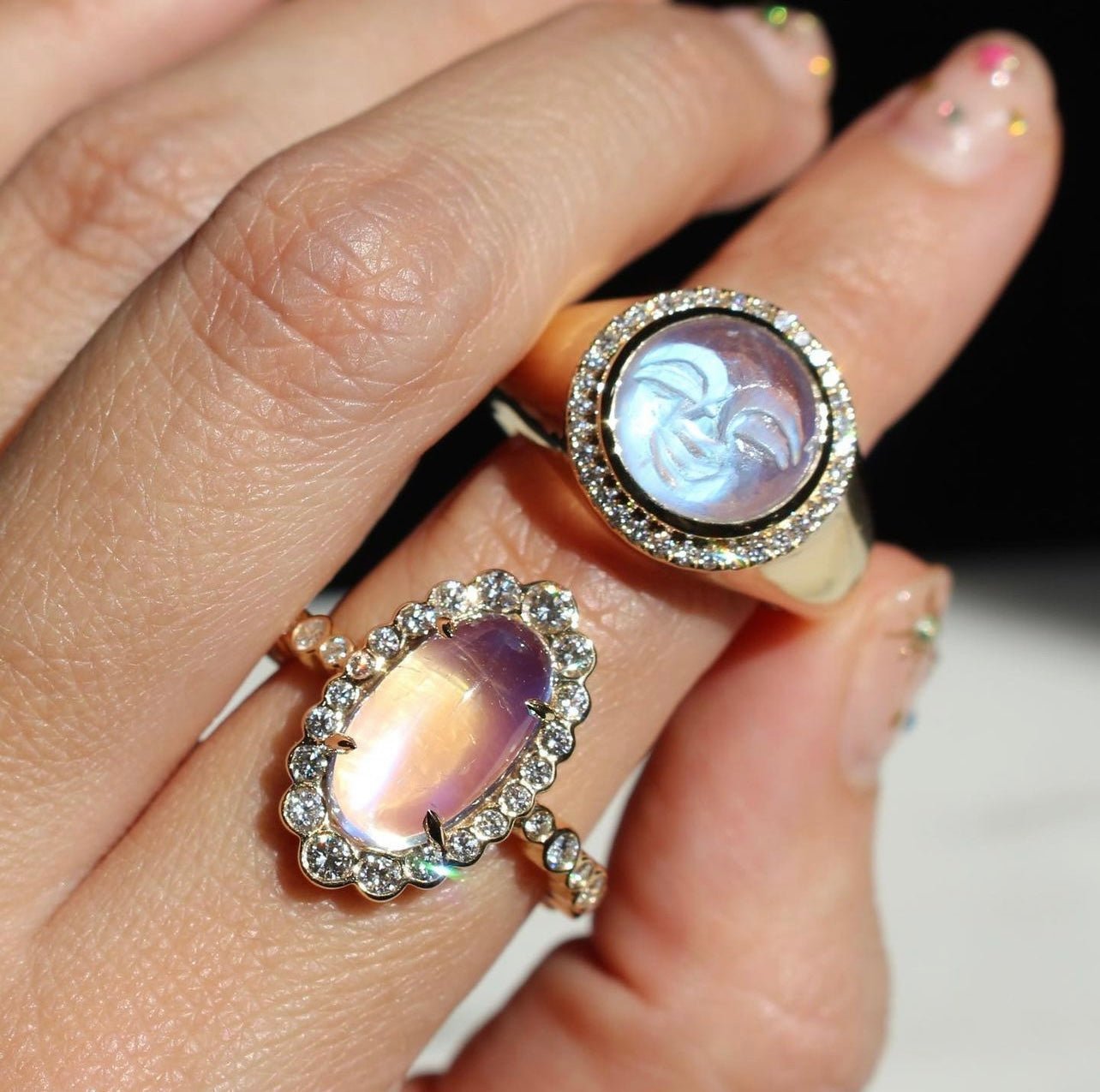There are few gemstones with a history as fate-filled and surprising as Brazilian Paraiba tourmaline. Discovered only a few decades ago, this category of tourmaline is prized for its vivid neon-blue hues and wonderful saturation. These attributes make the stone stunning to look at and incredibly valuable in the world of fine gems.
However, the journey to Brazilian Paraiba’s success was not always easy and not always obvious. Tourmaline itself had a rough path to its respectable use in jewelry. It was frequently misrepresented or assumed to be various other stones based on its numerous shades.
At Mark Henry Jewelry, we think it's about time that the beauty and prized qualities of Paraiba tourmaline are conveyed to the masses. The best way to fully understand how precious Brazilian Paraiba tourmaline stones are is if you get the chance to wear one.
We’re here to guide this process by explaining just how the stone was found, what it is made of, and how to seek out the best quality pieces. Soon enough, you’ll be the owner of your slice of exotic gemstone history, perfect to pass down to future generations!
A Fascinating Discovery
Believe it or not, discovering the Brazilian Paraiba tourmaline was actually a happy accident. Miners were well aware that high-quality tourmaline was available in Brazil, but the expeditions of one miner, Heitor Barbosa, stumbled upon something even better.
Before we explain any further, we must first break down what exactly the properties of traditional tourmaline are.
Blast From the Past: Tourmaline
Tourmaline is the birthstone of October and has been mined for centuries, dating as far back as the 1500s. These gemstones are formed in crystalline schists found throughout granite pegmatites. They are typically composed of a combination of multiple elements. These often include magnesium, sodium, iron, aluminum, and lithium.
Since they have such a varied range of elemental configurations, tourmalines come in many different colors. They can range anywhere from luscious pinks to sharp black hues. Green tourmaline is a classic favorite due to its striking resemblance to emeralds. In fact, tourmalines have had mistaken identities for as long as they’ve been mined.
Rubellites, red tourmalines, were believed to be real rubies for many years. They even tricked some of the Russian royalty, and were used in a famous pendant and mislabeled. It was easy then to interpret one type of gemstone as another because geologists were so limited in technology.
Nowadays, practices like spectroscope readings can be used to tell tourmalines apart from other gems — and from each other!
When Was Paraiba Found in Brazil?
Now that you know a little bit about tourmaline’s backstory, we can proceed to the discovery of its Paraiba variety. As we mentioned before, Heitor Barbosa was hunting for amazing tourmalines in Morro Alto hill in the Brazilian state of Paraiba. In 1982, the world discovered that this section of pegmatites produced stunning tourmalines and aquamarines.
Barbosa had a hunch that there was more to be seen from this special area. He continued his work for five years with little success, until he struck something better than gold. In 1987, Barbosa’s team came across vivid, nearly neon blue colors in tourmalines from the area.
Green crystals were taken from this hill and, once opened, revealed a stone we now call Brazilian Paraiba tourmaline. By 1989, these gems were up to grade to be sold as jewelry.
Barbosa knew that he had a revolution in the exotic gem world on his hands. However, he couldn’t tell what exactly was causing these tourmalines to be colored so brilliantly compared to their other tourmaline relatives.
Across the Universe
After it was discovered that copper was the defining factor in making these Paraiba tourmalines so exquisitely blue, green, and violet, miners sought out more examples. The Brazilian mines were quickly inundated with production, and most were run dry quickly into the 1990s. This became an issue for the jewelry industry as well as the local miners relying on these jobs.
Luckily for gemologists and jewelers (but perhaps not for the Brazilian mining industry), Paraiba-quality gemstones were discovered elsewhere. Similar saturation and bright colors were found in tourmalines across the world. Countries of importance included Mozambique, Afghanistan, Pakistan, Madagascar, the United States, and Nigeria.
When Were African Tourmalines Discovered?
African tourmalines with copper were found in 2000. After analyzing the similarities between Brazilian Paraiba tourmaline, and other copper-bearing tourmalines from around the world, a pattern was formally considered. The Gemstone Industry Laboratory Conference changed Paraiba tourmaline from a description of a tourmaline stone from the state of Paraiba to any copper elbaite tourmaline.
Why Is Paraiba So Unique?
Saturation and color is what sets Paraiba tourmaline apart from its counterparts. We know that this is because of its copper content. Yet, there is so much more to this unique stone than simply its appearance.
Properties
Brazilian Paraiba tourmaline is the finest quality of all of the Paraiba findings. It exceeds its competition easily. It sits comfortably at a 7-7.5 on the Mohs scale of hardness. This means that it is highly durable and great in any jewelry placement desired (yes, even rings). It does not have any cleavage, and it has a hexagonal crystallography.
Cut
Brazilian Paraiba tourmaline is famous for its color, and jewelers do whatever they can to make it a focal point. This means that these stones often need to be custom cut.
Brilliant cuts are some of the most popular, including oval and pear shapes. They help to show off all of the ways that the blues and greens catch the light, and give the optimal viewing experience to the wearer.
Clarity
Brazilian Paraiba tourmaline naturally has inclusions. These aren’t always visible to the naked eye, but some people favor this enchanting look. Some inclusions are nicknamed “centipedes” due to their resemblance to the many-legged insect.
If you have your Brazilian Paraiba tourmaline examined by a gemologist, ask them to report any inclusions. If none turn up, it is likely an imitation or lab-created stone.
Perks vs. Pitfalls
Since Brazilian Paraiba tourmaline’s supply was depleted so quickly, these stones are quite rare. Paraiba tourmaline from other regions is still mined and far more accessible. Choosing which stone works best for you comes down to availability and budget.
If you pride yourself on the true value of stones, a Brazilian Paraiba tourmaline is always the way to go. We encourage you to weigh the pros and cons of the gem before you go on your search. If you’re wondering where to start, Mark Henry Jewelry offers true Brazilian Paraibas in excellent and varied designs and pieces!
How Much Does Brazilian Paraiba Cost?
Prices for Brazilian Paraiba tourmaline can be quite steep as the carats get bigger. This goes for any exotic gemstone, but especially those that are typically found in fragments. Most Paribas on the market are under five grams. During the boom of Paraiba love, one-carat gems were going for $20,000 a piece.
Since Paraiba is more widespread and no longer classified by region, you can find one-carat stones for $2,000 to $5,000. Brazilian Paraiba is always more expensive due to its inherent rarity and value. We believe it is well worth the investment.
Mark Henry’s Paraiba
We have a mixture of Brazilian and non-Brazilian Paraiba tourmaline in our Mark Henry Paraiba collection. It’s hard to pick favorites, but we can’t help but adore our Brazilian stones for their exceptional glow.
Mark Henry’s Paraiba selection includes bracelets, earrings, necklaces, and rings.
One of the best examples of these pieces is the best-selling Tempest Brazilian Paraiba Ring.
It features a riveting blue-green Brazilian Paraiba set in four prongs, surrounded by 0.41ct of petite diamonds. The Paraiba itself is 0.76ct in an oval shape. This new-aged bypass ring evokes an instantly-memorable fluidity that just begs for a second glance (or more).
How To Clean Brazilian Paraiba Tourmaline
Once you’ve received your Brazilian Paraiba tourmaline, you’ll need to know how to keep it in good condition. We recommend the same practices as you’d perform to clean any piece of fine jewelry.
A simple wash with water and a mild soap will do the trick. Be gentle! Make sure not to scrub the stone itself too hard. It is strong, but should be treated with care.
Hold Your Stone Accountable
We highly recommend requesting certification for all of your fine jewelry purchases. At stores like Mark Henry, sales automatically come with a grade from a Gemological Institute of America-certified gemologist. This guarantees that your Paraiba is from the correct region that it claims to be from (in this case, Brazil).
It also allows you to prove the value of your piece in the future if you were ever to sell it. We hope that it will last in your family, dazzling future gemstone lovers for decades to come.
Sources:
Paraíba Tourmaline Value, Price, and Jewelry Information | Gem Society

